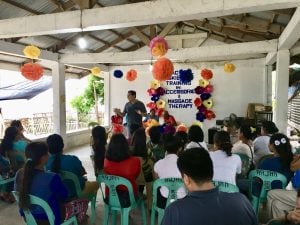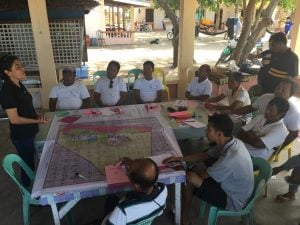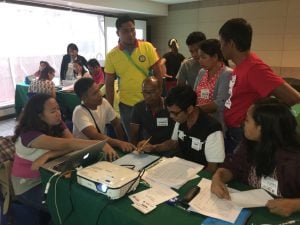Twelve Years After Yolanda:
How UP Visayas Helped the People
of Gigantes Island Rise Again
From the wreckage of one of the world’s strongest typhoons, a partnership between UP Visayas and the people of Gigantes continues to inspire hope and resilience.
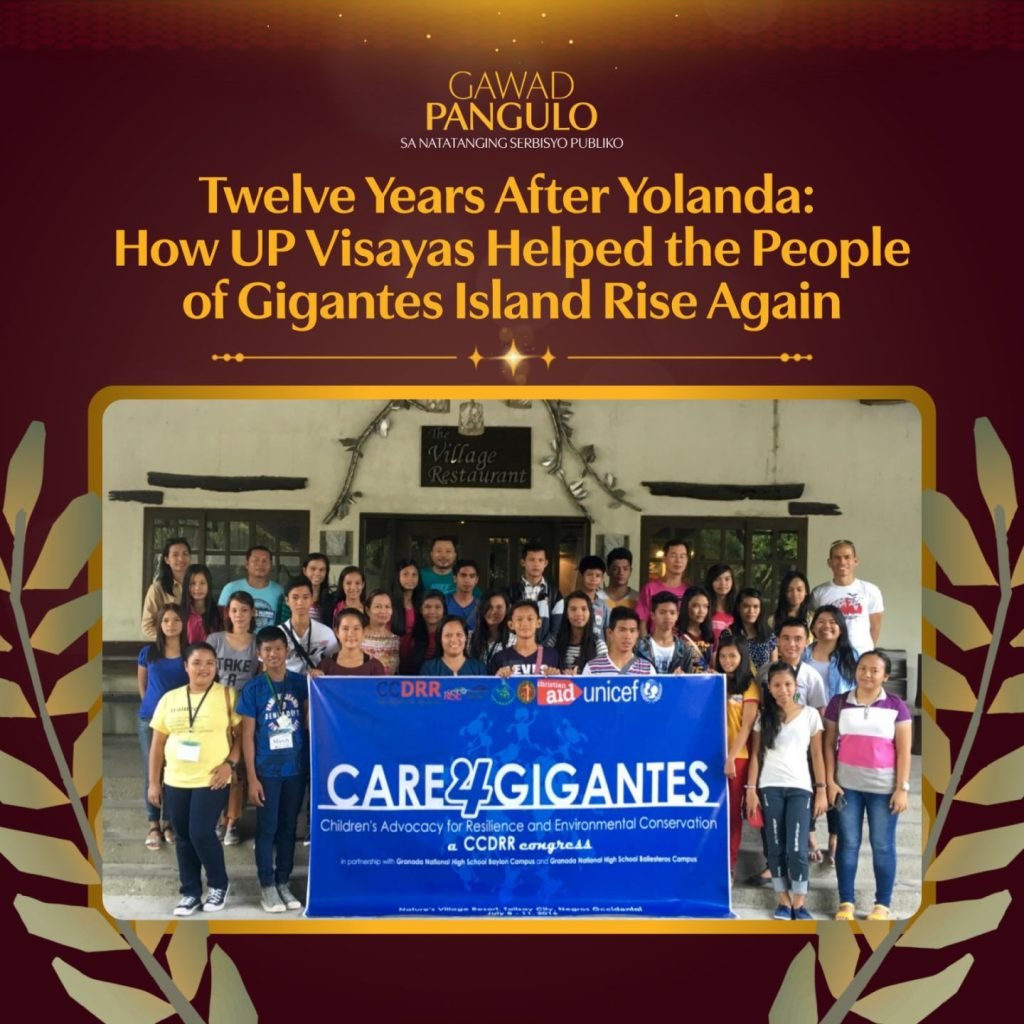
When you travel to the Gigantes Islands today, it would be difficult to imagine the silence that once blanketed its shores. The white sand is now filled with chatter, from children racing along the beach and fisherfolk gutting the day’s catch to visitors snapping photos of the islands’ majestic cliffs or the ruins of the old lighthouse. Life feels full, familiar, and more confident.
But twelve years ago, these very shores looked nothing like this.
In November 2013, when the Super Typhoon Yolanda (international name: Haiyan) swept through Visayas, Gigantes—an island chain only reachable by a two-hour boat ride from ports of Carles and Estancia in Iloilo—found itself directly in its path. The islands lost more than just boats, homes, livelihoods, and even the tiny comforts of their daily routines. Along with these losses, the residents also lost hope that help would come any sooner. The sea that once nourished generations of locals transformed into a fierce wall of peril. Communication lines were severed, and power was absent for months. Life was stripped down to the essentials: water, shelter, and the desire to survive.
Yet if Yolanda stripped the islands bare, what emerged afterward was a story of inspiration and public service: a partnership between the people of Gigantes and the University of the Philippines Visayas. This collaboration not only aided their recovery but also empowered them to rise stronger and be more resilient in the face of all uncertainties.
Also Read:
The Storm That Tested an Island’s Spirit
For many Filipinos, Yolanda is just a distant memory, a reminder of headlines and harrowing images on TV screens. For the residents of Gigantes, it remains a vivid recollection that feels as fresh as yesterday: the deafening sound of roofs being torn from houses, the sight of boats being hastily lifted from the water, and the instant when once-familiar landmarks disappeared overnight.
As the storm ravaged the islands and its aftermath unfolded, families sought refuge in makeshift shelters crafted from salvaged wood. For days, uncertainty loomed as people anxiously waited, unsure when—or if—help would arrive.
But in the face of loss, people began to rebuild: gathering neighbors, sharing whatever food remained, clearing paths, and repairing what they could salvage. They confronted grief as a community, standing strong collectively.
The Arrival of a Different Kind of Assistance
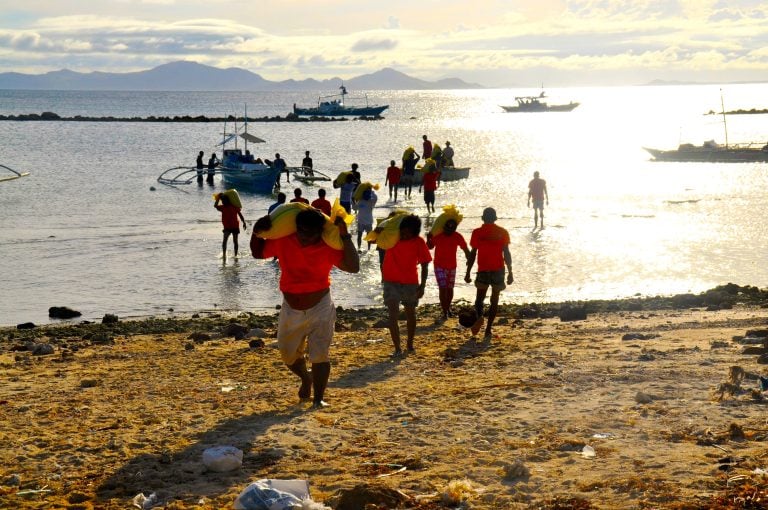
When Typhoon Frank hit Gigantes in 2008, local officials noted significant delays and shortages in emergency aid. Relief goods arrived over a month later, and limited supplies hampered equal distribution. The post-Yolanda situation was different, as UP Visayas partnered with Christian Aid to facilitate a rapid response and early recovery program that met international standards. This program complemented the support provided by other humanitarian agencies that also responded to the emergency.
- The Community Development (CD) faculty of the Division of Social Sciences at the University of the Philippines Visayas initiated public service work in the Gigantes Islands as early as 2012, focusing on building the capacities of small-island communities for disaster risk reduction.
Under the leadership of Associate Professor Jorge S. Ebay, then-director of the Center for West Visayan Studies and a faculty member in the Community Development program, the UP Visayas project team, with support from Christian Aid, began work on the RISE (Bangon) Gigantes Project: Rehabilitation for Island Sustainability and Empowerment. The initiative led to the development of two interconnected programs aimed at enhancing the resilience of small island communities: the Child-Centered Disaster Risk Reduction Program for Western Visayas, in collaboration with UNICEF, and the Building Resilient and Sustainable Small Island Communities program, supported by the Foundation for the Philippine Environment.
“By leveraging empirical data and direct field experience, we successfully evolved our engagement into a more sector-specific initiative, known as the TEACH DRR Project. This project involved a broader range of actors, communities, and small islands,” Ebay adds.
The aftermath of Super Typhoon Yolanda and the resilience of the people of Gigantes emphasized the need for a discursive pivot to small island communities. The RISE Project and its iteration, the Disaster Risk Reduction Training, Education, and Advocacy for Children’s Protection and Resilience (TEACH DRR) Project, emphasized the urgent need to prioritize small island communities.
“As an archipelagic nation, the Philippines has limited the application of maritime, archipelagic, or nissological perspectives in addressing national issues and concerns. Consequently, isolated and vulnerable small island communities often receive inadequate attention and resources. Insufficient policy and governance measures to protect them from social and environmental challenges further exacerbate their precarious situations,” explains Assoc. Prof. Ebay.
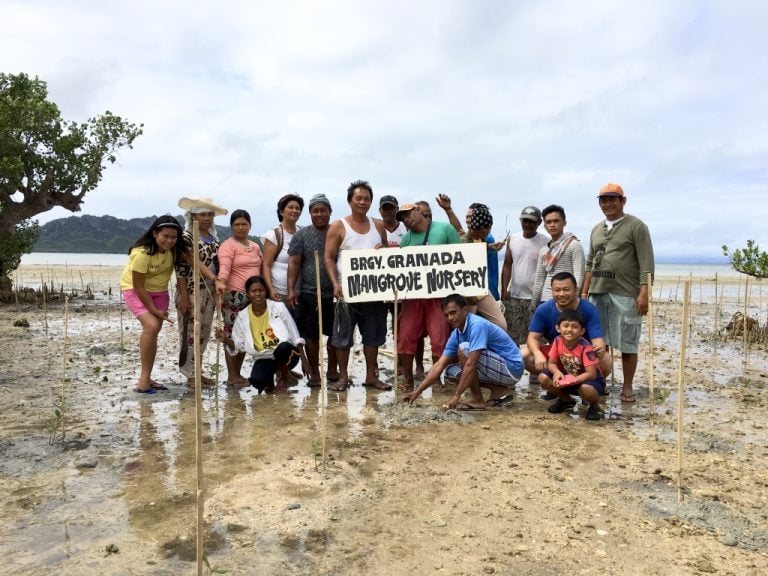
UP Visayas’ work in the islands—through information databasing, capacity development, providing technological solutions, natural resource management, and sectoral participation—helped bridge not only the physical gap but the institutional one. For TEACH DRR, UP Visayas set its sights on two small island communities in Calagnaan Island, located in northeastern Iloilo.
- Calagnaan Island was part of the broader Philippine relief effort, but one remote village was not reached until November 23, 2013, more than two weeks after Yolanda struck the island.
The UP Visayas project team conducted a series of capacity-building workshops for children and multi-sectoral groups on child-centered disaster risk reduction, incorporating health, nutrition, child protection, and water, sanitation, and hygiene (WASH) programs.
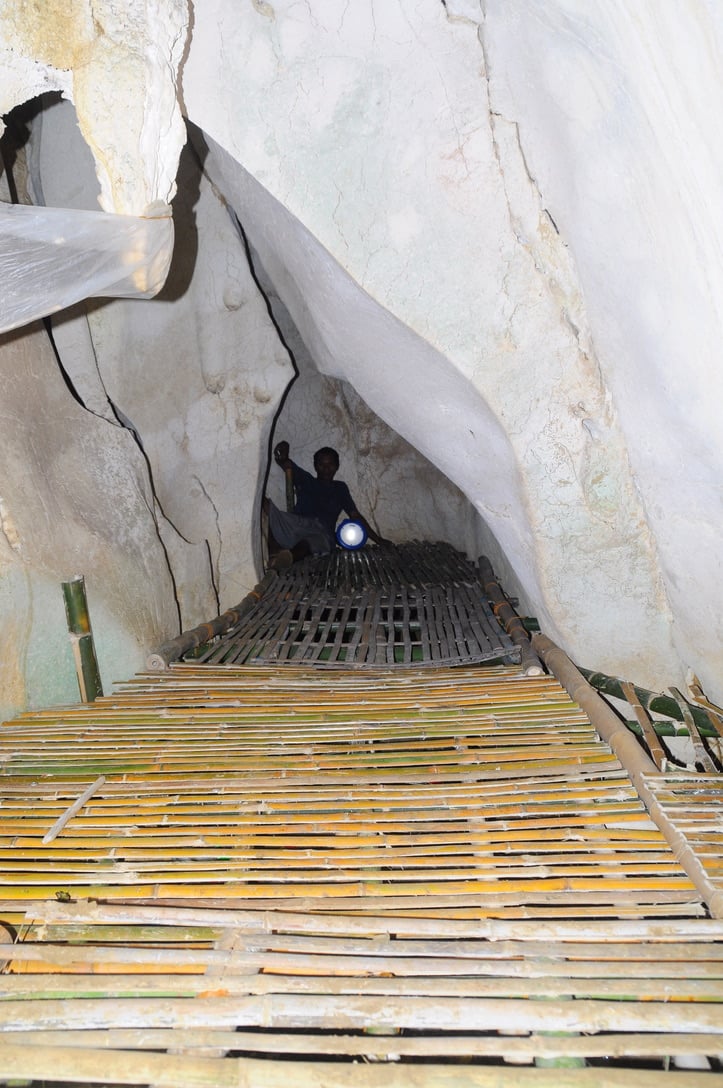
Reflecting on the impact of their projects on small island communities, Ebay shares, “We are proud that the programs we implemented addressed these disservices, allowing local government partners to put small islands on the map and incorporate their concerns into local development plans and programs.”
The initiative also supported the advocacy project of Christian Aid, Scaling UP Resilience in Governance (SURGE): Inclusive Community-Based Disaster Risk Reduction (ICBDRR), which elevated the resilience concerns of small island communities to the national policy level.
‘No longer outsiders’
What’s most striking about the impact of RISE (Bangon) Gigantes and TEACH DRR projects is not the number of workshops held or the policies they influenced. It’s the cultural shift: the move from marginalization to empowerment, from invisibility to recognition.
These projects showed that small islands are neither too remote nor too sparsely populated to be prioritized. They demonstrated that resilience is strongest when shaped by those who live closest to the risks. They reminded the country that a sustainable recovery must be both human-centered and future-driven.
In response to these impacts, the RISE (Bangon) Gigantes Project was among the first awardees of the 1st Gawad Pangulo for Excellence in Public Service held in 2017.
“The Gawad Pangulo Award we received for the RISE (Bangon) Gigantes Project: Rehabilitation for Island Sustainability and Empowerment highlighted the significance and worth of public service work in remote and small island communities,” Ebay remarks. “At an academic institution where peer review of one’s work is widely accepted, we were delighted that our work was vetted and acknowledged by the Padayon UP.”
At the same time, the TEACH DRR Project was also recognized in the 3rd Gawad Pangulo Award for Excellence in Public Service in 2019 for demonstrating “the viability of the child-centered disaster risk reduction (CCDRR) strategy in instituting a holistic and mult-sector program […] in the Calagnaan Island.”
For Ebay, receiving the Gawad Pangulo is a ‘badge of approval’ that they proudly carry in their ongoing collaboration with partners in small island communities. It also acts as a ‘significant confidence booster’, fueling their ambition to broaden their reach and impact. Their contributions have played a vital role in advancing UP Visayas’ vision of leading in fisheries and aquatic sciences education, research, and development.
“This partnership has not only enriched our curriculum and instruction but has also provided students with a valuable platform for practical experience. In the field of Community Development, there is an ever-present demand for praxis to enhance theory, content, and analysis. This demand sets high standards and expectations for younger scholars, encouraging them to hone their skills and become proficient development practitioners,” Ebay adds.
Looking back on the journey that uplifted the lives in Gigantes and Calagnaan, Ebay beautifully summarizes the powerful impact of public service on their lives:
“We value the latitude UP provides for public service. It enabled us to pursue our advocacy and passion while contributing to the university’s vision and mandate. Although our formal engagements have concluded, our work continues to yield positive results. Communication lines stayed open with exchange just as vibrant. We fulfilled our commitments and earned our partners’ trust and confidence. However, beyond the tangible benefits and outcomes, we also believed we grew and matured as development practitioners and public service workers. It whetted our appetite for service, sharpened our community development skills, enriched our knowledge, and enhanced our teaching abilities. Our community partners learned from us, and we, in turn, learned from them. We thrived on transparency and mutual respect, built meaningful partnerships, and forged lasting friendships. For them, we were no longer outsiders. We became integral members of the community, willing to stand with them, side by side, consistently, rain or shine. That is priceless.”
The Padayon UP Public Service Office has extended the nominations for the Gawad Pangulo sa Natatanging Serbisyo Publiko to November 28, 2025.
The Gawad Pangulo sa Natatanging Serbisyo Publiko aims to effect meaningful change across the UP System by identifying, supporting, and scaling impactful public service programs that deliver tangible benefits to communities and demonstrate the University’s role as a premier public service university.
Public service initiatives implemented by UP units, personnel, and student organizations from 01 January 2022 to 30 June 2025 may be nominated. Public service initiatives shall have already made significant contributions or impacts within the said period.
The awarding will be in June 2026 during the Linggo ng Unibersidad.
View the full mechanics on our website: https://publicservice.up.edu.ph/gawad-pangulo-sa-natatanging-serbisyo-publiko/
Cover Design by Chu Quinto
Edited by AVP Mark Lester del Mundo Chico
Photos from Associate Professor Jorge S. Ebay

